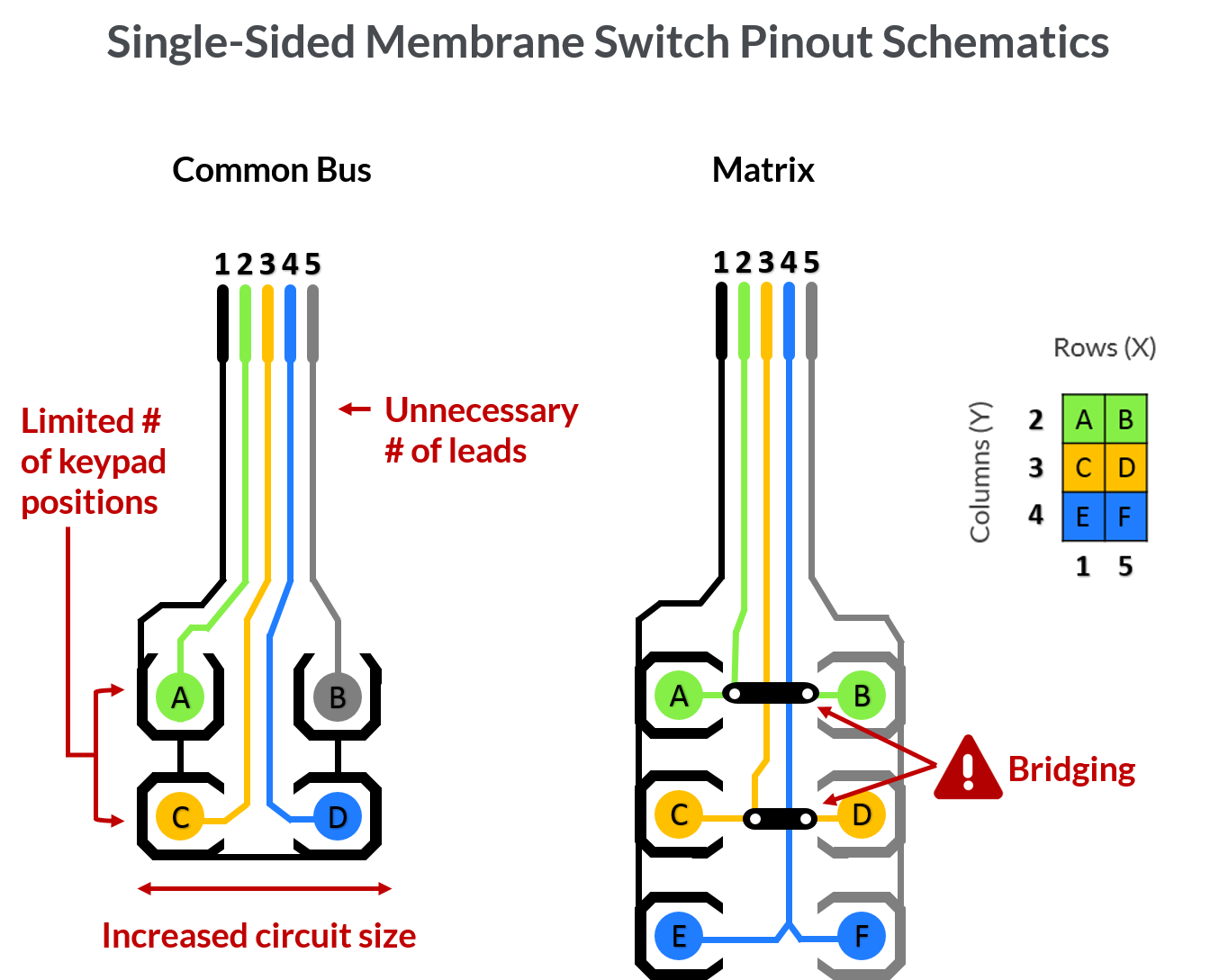Comprehending the Performance of Membrane Changes for User User Interface Instruments
The functionality of membrane layer switches stands for a substantial innovation in user interface design, combining effectiveness with visual adaptability. As sectors progressively prioritize user experience, understanding the nuances of membrane switch modern technology comes to be vital.
What Are Membrane Layer Switches?
Membrane layer switches are ingenious interface tools that promote individual interaction with electronic equipment. These functional elements are composed of numerous layers, consisting of a graphic overlay, spacer, and a published circuit layer. The style enables a smooth combination right into numerous electronic devices, boosting both the aesthetic and functional aspects of user interfaces.
Membrane buttons are frequently employed in a large range of applications, from family appliances to commercial machinery and clinical devices. Their building and construction normally includes a thin account, making them a perfect selection for portable styles. The responsive comments given by these switches can be crafted to satisfy particular customer preferences, making certain effective interaction in between the customer and the device.
Durability is one more considerable benefit of membrane buttons, as they are immune to dirt, moisture, and chemicals, which enhances their life-span sought after settings. In addition, these buttons can be tailored in terms of form, size, and visuals design, permitting for branding and user-specific features. On the whole, membrane changes stand for a practical option for boosting user experience in digital tools, combining performance with aesthetic allure in a reliable manner.
Exactly How Membrane Layer Switches Over Work
Operating on a straightforward concept, membrane layer switches over utilize a layered building to sign up individual input effectively. Each button contains multiple layers, including a printed circuit layer, a spacer layer, and a top visuals layer, which are made to function with each other seamlessly. When a user presses the top layer, it presses the spacer layer, bringing the conductive elements of the circuit layer right into contact with each other.
This get in touch with develops a shut circuit, signifying the gadget to execute a details feature. The style enables numerous configurations, including responsive comments, which can boost the user experience by providing a physical feeling upon activation. The products made use of in membrane switches frequently include flexible substrates, such as polyester or polycarbonate, which ensure sturdiness and resilience versus damage.

Trick Advantages of Membrane Layer Buttons

An additional considerable advantage is their density. Membrane layer switches are thin and light-weight, which allows manufacturers to save room in their gadgets without compromising functionality. This attribute is especially useful in applications where weight and quantity are crucial considerations.
In addition, membrane buttons are resistant to dirt, moisture, and chemicals, boosting their resilience. This strength prolongs their lifespan and decreases the need for regular substitutes, causing cost financial savings in time.
In addition, the responsive responses supplied by membrane layer buttons can be optimized my response to enhance customer interaction. They can include functions such as raised buttons or distinct clicks, improving functionality and customer experience.
Applications Across Industries
Individual user interface gadgets making use of membrane switches prevail in a large range of markets, showcasing their adaptability and functionality. Membrane Switch. In the medical industry, membrane layer buttons are essential to devices such as analysis equipment and individual monitoring systems, where their toughness and convenience of cleaning are vital for keeping hygiene requirements. In the auto industry, these switches are used in dashboard controls and infomercial systems, providing a smooth and contemporary user interface for customers.
Moreover, the consumer electronics field gain from membrane switches in appliances and handheld devices, where small style and easy to use user interfaces boost customer experience. Industrial applications additionally utilize membrane layer switches over for control board in equipment and automation systems, stressing their effectiveness and resistance to extreme environments.
In the you can try here aerospace and defense markets, membrane layer buttons are made use of in cockpit controls and tools, where dependability and efficiency under severe conditions are vital. Furthermore, the video gaming industry increasingly incorporates membrane buttons in controllers and gallery equipments, adding to an interesting user experience. On the whole, the versatility of membrane layer switches allows their prevalent usage across various fields, highlighting their value in modern-day interface layout.
Future Patterns in Membrane Switch Modern Technology

Additionally, making use of advanced materials, such as polycarbonate and polyester movies, is anticipated to increase, providing improved longevity and resistance to ecological stressors. These products add to the total durability of membrane layer buttons, making them published here suitable for harsher industrial applications.
In addition, the consolidation of smart innovation, consisting of IoT connection, will make it possible for membrane buttons to interact with other devices and systems, assisting in a more interactive individual experience. This fad lines up with the expanding demand for clever devices across numerous fields, from healthcare to customer electronics.
Lastly, personalization options are expected to increase, permitting manufacturers to create bespoke solutions customized to specific customer demands and preferences. These advancements will certainly position membrane switches as necessary elements in the evolution of individual interface technology.
Conclusion
In conclusion, membrane layer switches represent a pivotal development in individual interface technology, offering a trusted and functional service for diverse digital applications. As advancements in product science and touch noticing modern technologies proceed, the functionality and applicability of membrane layer switches are anticipated to broaden, reinforcing their value in modern electronic gadgets.